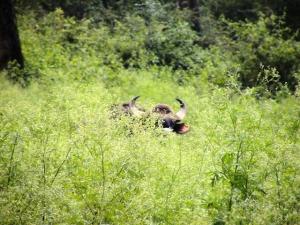Weed-crop competition

"Cursed is the ground because of you; through painful toil you will eat of it all the days of your life. It will produce thorns and thistles for you and you will eat the plants of the field. By the sweat of your brow you will eat your food until you return to the ground."
-Genesis 3:17 -19-
As long as humans have cultivated plants, weeds have been a problem. The term weed in its general sense is a subjective one since a weed is not a weed when growing where it belongs or is wanted. However, weed scientists define weeds a native or introduced species that has an apparent negative ecological or economic effect on agricultural or natural systems.
The primary negative impact of weeds on crop growth and yield is through competition for the limited environmental resources upon which plant growth depends; water, temperature, light and nutrient. Competition occurs when the availability of resource is not enough for both crop and weed and when the demands of one of them limit the supply to the other.
Crop yield loss from weeds vary with both crop and region with estimated yield losses of about 10% in the less developed countries and 25% in the least developed countries. A very general rule for crop yield loss is that for every unit of weeds grown, there will be one less unit of crops grown.
I studied the competition between three subtropical weeds (Parthenium hysterophorus, Verbesina encelioides and Tagetes minuta) and a cereal crop; grain Sorghum when subjected to different levels of water stress. Please follow the links to the left to learn more!
Responsible for this page:
Director of undergraduate studies Biology
Last updated:
05/08/08
